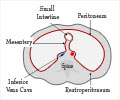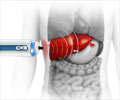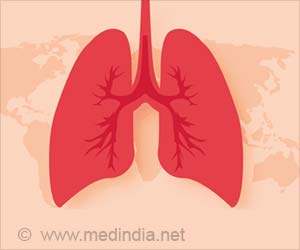Scientists have discovered, depleted new immune cell and halted runaway lung scarring in mice.

But a new study published in the journal Nature Immunology breathes new life into our understanding of IPF. Combining cutting-edge single-cell sequencing with novel computational techniques, UC San Francisco researchers identified a new type of immune cell that infiltrates lung tissue and initiates fibrosis. Furthermore, they were able to prevent fibrosis in mouse models of the disease by targeting these cells for destruction, a discovery that may lead to new treatments for this terminal illness.
Nearly Half of All Deaths Involve Some Form of Fibrosis
Fibrosis, which affects many organs besides the lungs, is essentially wound healing run amok. The disease occurs when specialized cells called fibroblasts create excess scar tissue, sometimes in response to an injury, but often for no discernible reason -- "idiopathic," in medical parlance.
Fibrotic tissue isn't intrinsically harmful, and it's essential for proper wound healing. In skin, it forms the scars that halt bleeding in response to a cut. In the lungs, it's thought to provide a scaffold for lung tissue to regenerate after a respiratory injury. But in some patients, scar tissue can accumulate excessively, or at the wrong place or time, with devastating results.
"Fibrosis in some form contributes to 45 percent of deaths in the developed world," said Mallar Bhattacharya, MD, assistant professor of medicine and senior author of the new study. "The most familiar form is probably liver cirrhosis, but fibrosis appears in many contexts -- lung, kidney, heart and even in cancer, where fibroblasts and the scars they produce can literally form a protective shield of collagen around a tumor, preventing immunotherapies from working."
Advertisement
"People generally don't worry about getting IPF. But when you get the diagnosis, it changes your life forever. You become a professional IPF patient just trying to cope with debilitating symptoms. There's no known cause, and the only cure is a lung transplant," Bhattacharya said.
That's because "macrophage" is a category that comprises a startling array of diversity, in much the same way "fruit" encompasses cultivars as varied as apples, grapes and cucumbers. Until recently, distinguishing the many cell types that constitute the macrophage category was akin to identifying every fruit that went into an exceedingly elaborate smoothie. Single-cell sequencing changed that.
"Single-cell sequencing is relatively new technology that's changing the face of biology," said UCSF's Dvir Aran, PhD, a postdoctoral researcher in computational biology and co-lead author of the new study. "Every day we see new papers that use the technique to identify new cell types and new cell dynamics that have important implications for many diseases."
But gleaning deep biological insights from single-cell sequencing isn't trivial. Analyzing and interpreting the data requires tremendous computational firepower. SingleR -- a new computational tool developed by Aran to analyze single-cell data -- provided the necessary framework to make sense of the mounds of data emerging from Bhattacharya's lab.
"SingleR works by connecting new single-cell data with existing data that was collected over many years using older methods. The data sets that were already available helped us characterize a new cell type that wasn't identified before," Aran said.
Scientists already knew of at least two kinds of lung macrophage. Alveolar macrophages arise during embryonic development and are responsible for removing debris and microorganisms from the lungs. Interstitial macrophages originate in white blood cells from the bone marrow and are involved in inflammatory responses.
In mouse models of fibrosis -- models in which the disease is caused by administering the cancer drug bleomycin -- SingleR was able to identify a third, previously unrecognized lung macrophage that exists in a transitional state straddling the boundary between interstitial and alveolar.
"This cell state wasn't recognized before, but it seemed to be very specific to the disease. These cells infiltrate the lung in a state similar to baseline interstitial macrophages, but then they start to lose their original identity and become alveolar. That transitional state is where they become pro-fibrotic," explained Aran.
Depleting Newly Discovered Immune Cell Prevents Fibrosis
To confirm the SingleR results from the bleomycin lung fibrosis model, the researchers performed an array of experiments that reinforced and expanded upon the findings from their computational efforts.
"Amazingly, our in vivo experiments in mice showed that this newly-discovered transitional state is the only macrophage subset that is found in the fibrotic scar," said Aran. "We observed similar results when we profiled tissue samples obtained from people suffering from lung fibrosis."
Not only did these experiments confirm that the transitional macrophages were the culprit, they also helped explain how these cells were able to coax fibroblasts into forming the scar tissue that defines the disease. The researchers found that these transitional immune cells were producing a protein called Pdgfa -- a molecular signal that gets secreted from the cells and attaches to Pdgfa receptors that happen to be present on the surface of scar-forming fibroblasts. This macrophage-to-fibroblast communiqué instructs the fibroblasts to proliferate, producing fibrotic scars. But this finding also suggests that removing Pgdfa-producing macrophages may prevent fibrosis, a hypothesis that the researchers tested in another mouse model.
The researchers generated genetically engineered mice that were outfitted with a controllable "kill switch" that selectively destroyed transitional macrophages. When the kill switch remained off, bleomycin-treated mice exhibited severe fibrosis. But when the switch was triggered after bleomycin was administered, the transitional macrophages vanished and the mice remained fibrosis-free. These results confirmed that the transitional macrophages first identified by SingleR were responsible for fibrosis, and that depleting them was sufficient to prevent fibrosis.
"Our results suggest a potential strategy for combating fibrosis: targeting these transitional macrophages that localize to the fibrotic niche," said Bhattacharya. "We also demonstrate a newer way of doing biology that combines the expertise of scientists with different backgrounds. We start at the bench, use computational know-how to parse our data, and we then test our prediction back at bench to come to an understanding of a disease using new methods that are likely generalizable to other fibrosing diseases."
Source-Eurekalert












